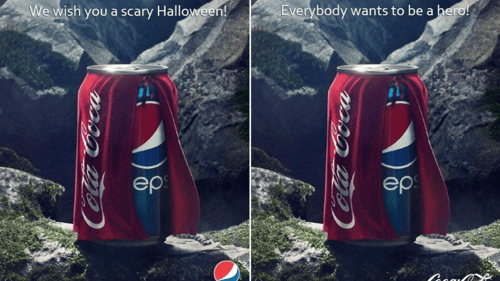Cart Abandonment - Just trying to stop the hurt

Posted by 256
March 5th, 2015
Cart Abandonment is a term which sends an uneasy shiver down the spine of many an e-commerce leader. It conjures up lost profits and poor user experience. Some studies show cart abandonment rates averaging as high as 72%. Ye Gods!
Given that the value of annual online spend by Irish consumers in 2013 was €4.1 billion, you'd imagine that e-commerce brands would be all over this figure and doing everything in their power to keep the abandonment rate as low as possible, wouldn't you?
256 Media has conducted a study of what tactics online brands are using to mitigate cart abandonment, and just how many are using them. We have also looked at how Irish brands perform against international best practice when it comes to dealing with cart abandonment. Read on to discover top industry insights from our survey - be prepared for some surprising stats and conclusions!
What we did
We became cart abandoners. We visited 27 e-commerce sites operating in Ireland and shopped them, taking note of every little thing along the way and recording it. We looked at 36 separate metrics for each site to establish what was the rate of adoption for each individual tactic being used to guide the visitor along the purchase path. We then looked at how the half that were Irish sites as a group compared to the half that were international brands operating here.
Back to the playground
The most important thing to know about the cart abandoner is that just because they have left your site, doesn’t mean they don't like what they saw. Remember that little boy or girl in the playground that laughed at your bowl cut or pulled your pigtails – then years later, you realised they had liked you all along? Well the majority of your cart abandoners are just the same. According to a study by SeeWhy, 75% of customers abandon their carts with the intent of making a purchase at a later stage, and 51% of all cart abandoners will make their purchase in store.
1. Cart Abandonment and Product Demonstration
Online shoppers will need pretty good substitutes for the physical absence of the product when they are making an online purchase. The customer should have the ability to turn the product around and inspect it at all angles with clever use of images. Video is also a tool that brings your product to life and relieves online buyer anxiety.
Key Findings
- 76% of all brands surveyed can improve the product visuals on their site with elements such as a 360 skew tool.
- 48% of brands use video demonstration to help sell their product, with international brands being almost 1.5 times as likely to employ this feature.
Some brands are one step ahead: John Lewis uses infographics to help demonstrate the lifestyle benefits of its products in a really engaging way.
2. A smooth user experience
A Forrester Research found that 40% of shoppers will abandon if it takes more than 3 seconds for a product page to load. (Yikes!) Not many sites have a chance it seems ...
Key Findings
- Only 37% of brands in our survey achieved page speeds of fewer than 3 seconds.
- International brands scored an average of over 3 seconds for their page speeds. Irish brands scored an average of 2.5>3 seconds.
We're not Speedy Gonzales, but we're giving international brands a run for their page speeds.
Other factors are becoming just as important, like tailored product suggestions in real time. Half of the sites we studied engaged in personalisation.
Littlewoods UK were the smooth criminals of our survey, with a free personal online shopper service. Brown Thomas was also an innovator, offering a seamless mobile experience with virtual receipts to their shoppers.
Key Findings
- 50% of brands surveyed offer tailored user suggestions.
- Responsive is the new normal - 78% of brands offer a mobile-friendly site. However, the other 22% are losing out on 15% of all online sales
- Irish sites were marginally more likely to offer a mobile optimised site
Overall, Irish brands offered a smoother user experience in comparison to the bigger international players. Woohoo - we're doing good!
3. Easing Buyer Anxiety
Buyer anxiety is bigger online than it is offline, due to the absence of the product and concerns about payment security and refund policies. For reassurance, Customers like to seek external opinion or 3rd party reviews for their purchase, as according the a study by Kantar, they believe the opinion of their peers to be more authentic than branded recommendations. Real customer service is another essential way to to create buyer reassurance; a good example is Vodafone's personalised ‘Ask Holly’ chat feature.
Key Findings
- 22% of brands surveyed have 3rd party reviews: international brands marginally more likely to employ
- 37% exploit the benefits of Google Plus reviews: international brands almost twice as likely to employ
- 15% of brands surveyed have a ‘Live chat option’: international brands much more likely to employ
4. Customer Rewards
Key Finding
- 44% of the sites surveyed offered loyalty schemes, with international brands being almost twice as likely to offer this
Yes, we accept poor Irish performance here can be partly attributed to smaller budgets, but loyalty schemes are a standard plug-in so the technology to manage them is readily available.
5. Continuing presence post-abandonment
As the majority of online shoppers are not ready to make their purchase then and there, you can give your users the space and tools they need to consider such as a Registration option, Wishlists, and cart maintenance. You can then use tactics to bring them back at a later stage, like display retargeting and tailored emails. Doing this at the right time may be just the nudge your customers need to make their purchase. Adding a timer and an incentive to your targeted emails is just as important as sending them!
Key Findings
- 40% of Irish brands are using email to follow up with cart abandoners, in comparison to 17% of international brands.
- Only 11% used dynamic retargeting
- 11% offered a timed incentive in the email to complete the sale
Compared to international norms Irish brands are leading the way for email but lagging on retargeting (remarketing).
So, what are the conclusions?
Overall, we were surprised at the lack of attention being paid to some fairly basic online strategies. Relatively few companies are nailing this area. An enormous amount of money is being spent getting the horse to water (online advertising spend alone amounted to €197 million in Ireland in 2014) - nothing like it is being spent getting the horse to drink.
To reduce cart abandonment, there are some immediate tools you can use, but you need to take a holistic look at your whole site and ensure that you are offering a smooth, personalised user experience; reassure them that you are trustworthy; let them know that their cart will be there for them for a while, perhaps with an incentive; and reach out post abandonment with a reminder via email and/or remarketing.
Irish brands are excelling in some areas of e-commerce. They are outperforming international brands in areas such as user experience and leveraging email. And when Irish brands get it right, they are as good as any. However, international brands are more likely to offer guest purchase, loyalty schemes, maintain carts for longer and use remarketing.

Previous Post
The Marketing Institute and 256 Media conduct Ireland’s first content marketing survey
Next Post

Jump-start your website’s SEO
Subscribe Here
You may also like...
Nicole Thomsen | Dec 11, 2023
Nicole Thomsen | Nov 6, 2023
Nadia Reckmann | Nov 2, 2023





